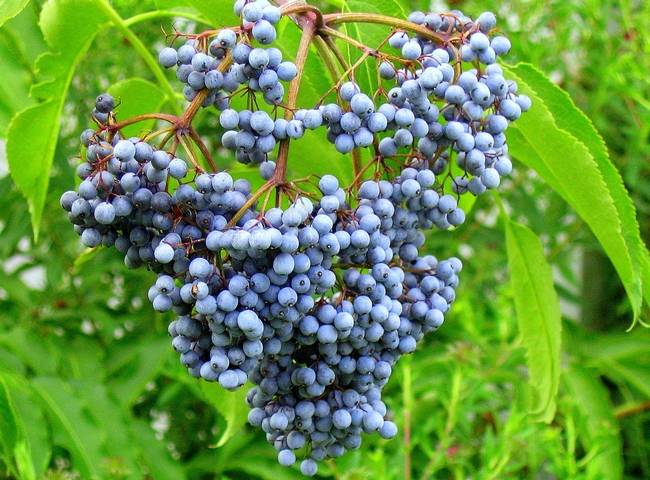Assessing the Potential of Elderberry as a California Specialty Crop
Can plants typically grown in hedgerows also be a source of income? That's the question guiding a UC study on the potential for farmers to grow elderberries as a commercial crop - https://elderberry.ucdavis.edu
Native hedgerows on farm edges benefit wildlife, pest control, carbon storage and runoff, but hedgerow planting by farmers in California is limited, often due to establishment and maintenance costs. What if hedgerows could provide a source of farm income, to offset costs?
California's native blue elderberries have long been a traditional food product of California native tribes, and are already often planted in hedgerows. They grow vigorously in a wide range of conditions from valley to mountains, with strong potential to adapt to a changing climate and growing water constraints. In the meantime, with growing consumer interest in health foods, nationwide elderberry product sales doubled from 2017 to 2018, for a total of $75 million (HerbalGram Market Report), but almost no commercial supply originates in California.
The UC Sustainable Agriculture Research and Education Program is collaborating with Cloverleaf Farm in Solano County and other farms to assess the potential for elderberries to become a commercial specialty crop, with a focus on hedgerow-grown elderberry production and marketing for small- and mid-scale farms.
Highlights from the project:
- Mature elderberry trees in unirrigated hedgerows in the Sacramento Valley can yield from 40 - 170 lbs berries/tree among the lower, reachablebranches
- We conservatively estimate potential net annual income from sales of destemmed elderberries in the range of atleast
$4,000-$9,000 per 1,000 linear feet for an unirrigated multi-species hedgerow, a figure that could grow substantially under labor-saving mechanized de-stemming
- A survey of California retailers and herbalists revealed strong interest in California-grown elderberries and elderflowers, and in organic and sustainably-grownproducts.
- Food chemistry analysis of native blue elderberry (Sambucus nigra ssp. cerulea) showed levels of desirablephenoliccompounds,suchasanthocyanin,similartothoseinthemorecommonlysold European black elderberry (Sambucus nigra ssp.nigra).
Funding for this project was made possible by the U.S. Department of Agriculture's (USDA) Agricultural Marketing Service through grant AM170100XXXXG011. Its contents are solely the responsibility of the authors and do not necessarily represent the official views of the USDA
